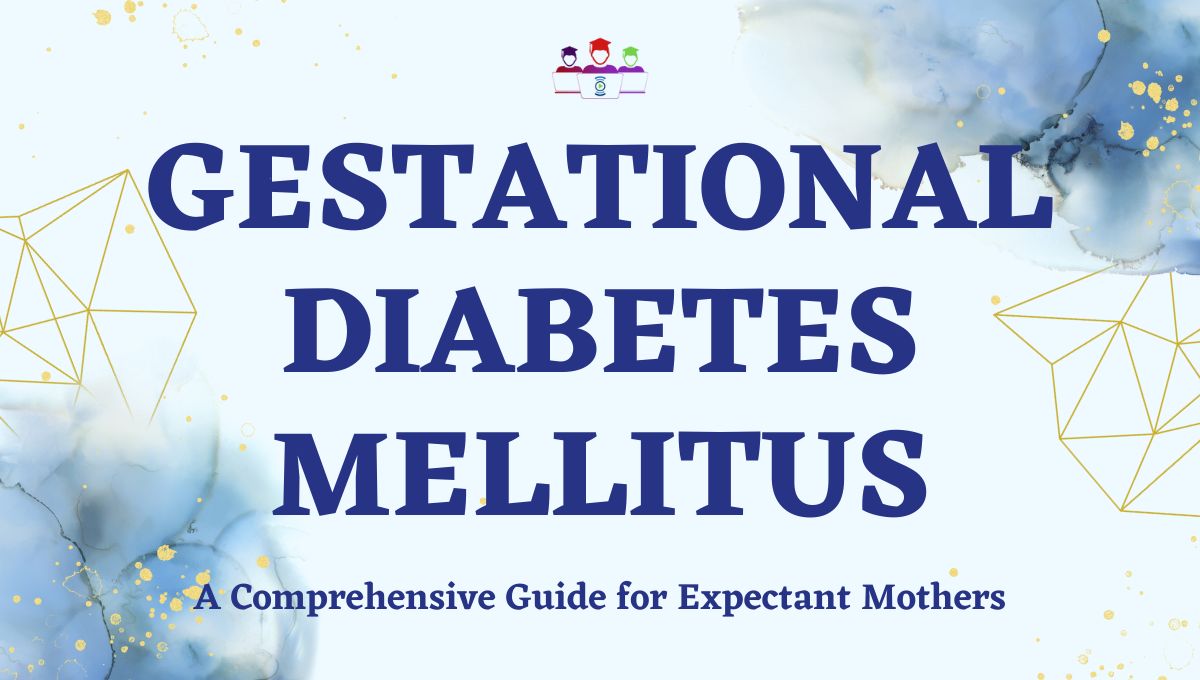Introduction
Gestational Diabetes Mellitus (GDM) is a unique facet of pregnancy that requires careful attention and management. This condition, characterized by elevated blood sugar levels during pregnancy, demands a nuanced understanding for both expectant mothers and healthcare professionals. This article aims to provide a comprehensive overview of Gestational Diabetes Mellitus, encompassing its definition, risk factors, screening, management, and potential implications for both mother and baby.

Understanding Gestational Diabetes Mellitus
GDM is a form of diabetes that manifests during pregnancy, typically around the 24th to 28th week. It arises when the body cannot produce sufficient insulin to meet the increased demands during pregnancy. Insulin is crucial for regulating blood sugar levels, and its deficiency or inefficiency in GDM can lead to elevated glucose levels.
Risk Factors
Certain factors increase the likelihood of developing GDM. These include being overweight, having a family history of diabetes, being over 25 years old during pregnancy, and belonging to specific ethnic groups. Recognizing these risk factors allows healthcare providers to implement timely screening measures.
Screening and Diagnosis
Screening for GDM is a routine part of prenatal care. Typically, a glucose challenge test is conducted between the 24th and 28th weeks. If results indicate elevated glucose levels, a more comprehensive glucose tolerance test may be recommended for diagnosis. Early detection is crucial for effective management and reducing potential complications.
Complications for the Baby
Unmanaged GDM can pose risks for the baby, including excessive birth weight, preterm birth, and respiratory distress syndrome. Additionally, babies born to mothers with GDM may have a higher risk of developing type 2 diabetes later in life.
Complications for the Mother
GDM increases the mother’s risk of developing high blood pressure, preeclampsia, and type 2 diabetes post-pregnancy. However, with proper management, many of these risks can be mitigated.
Management Strategies
The primary goal of GDM management is to control blood sugar levels. This typically involves dietary modifications, regular physical activity, and in some cases, insulin injections or oral medications. Close monitoring of blood sugar levels is crucial throughout the pregnancy.
Postpartum Considerations
After delivery, women who had GDM should continue monitoring their blood sugar levels. They are at an increased risk of developing type 2 diabetes, emphasizing the importance of postpartum follow-up and lifestyle modifications.
Empowering Expectant Mothers
Understanding GDM empowers expectant mothers to actively participate in their care. Adhering to recommended screenings, adopting a healthy lifestyle, and closely collaborating with healthcare providers contribute to positive pregnancy outcomes.
Conclusion
Gestational Diabetes Mellitus necessitates a holistic approach, involving both expectant mothers and healthcare professionals. Through early detection, diligent management, and postpartum vigilance, the impact of GDM can be minimized, fostering healthier outcomes for both mother and baby. Education and proactive care are pivotal in navigating the complexities of Gestational Diabetes Mellitus, ensuring a smoother journey through pregnancy and beyond.
FAQs
Certainly! Here are some frequently asked questions (FAQs) about Gestational Diabetes Mellitus (GDM):
What is Gestational Diabetes Mellitus (GDM)?
GDM is a type of diabetes that develops during pregnancy in women who didn’t have diabetes before pregnancy. It’s characterized by high blood sugar levels during pregnancy.
What causes Gestational Diabetes Mellitus?
The exact cause is not fully understood, but hormonal changes during pregnancy can lead to insulin resistance, where the body’s cells don’t respond effectively to insulin, resulting in high blood sugar levels.
What are the risk factors for developing GDM?
Risk factors include being overweight or obese, having a family history of diabetes, being older than 25 when pregnant, having previously given birth to a large baby, and certain ethnic backgrounds (such as Hispanic, African-American, Native American, or Asian).
How is GDM diagnosed?
GDM is typically diagnosed between 24 and 28 weeks of pregnancy through a glucose tolerance test. This test measures how quickly your body processes sugar.
What are the potential complications of GDM?
Complications for the mother can include high blood pressure, preeclampsia, and type 2 diabetes later in life. Complications for the baby can include excessive birth weight, preterm birth, and low blood sugar after birth.
How is GDM managed?
Management typically involves a combination of dietary changes, regular exercise, blood sugar monitoring, and possibly insulin injections or other medications to control blood sugar levels.
Can GDM be prevented?
While not all cases can be prevented, maintaining a healthy weight before pregnancy, eating a balanced diet, staying physically active, and managing stress can help reduce the risk.
Will GDM go away after pregnancy?
In most cases, blood sugar levels return to normal after giving birth. However, women who have had GDM are at an increased risk of developing type 2 diabetes later in life and should undergo regular screening.
Can I have a vaginal birth if I have GDM?
Many women with GDM can have a vaginal birth. However, your healthcare provider will monitor your condition closely to ensure the safety of both you and your baby.
How often should I have check-ups during pregnancy if I have GDM?
You’ll likely have more frequent prenatal visits to monitor your blood sugar levels, fetal growth, and overall health.
